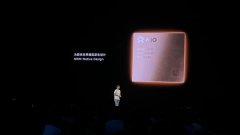Bloomberg News reported on Monday (December 11) that under the pressure of shrinking, the People's Bank of China may avoid significantly lowered the policy interest rate. China's actual borrowing cost will remain high next year, which will constitute another weight to economic growth.threaten.
It is reported that although the central bank has lowered policy interest rates this year, commercial banks have also reduced the benchmark loan interest rate to support economic activities, but China's actual loan interest rate has risen significantly.
According to Bloomberg, the interest rate of the cost adjustment and reflection of the actual borrowing cost has exceeded 4%, which may even be close to 5%, that is, the highest level since 2016.
The report explained that because the decline in consumption and factory prices is far faster than the average loan interest rate, the latter largely depends on the changes in the benchmark interest rate set by the Bank of China and large banks.The benchmark one -year loan is the most beneficial interest rate (ie LPR) of 3.45%, which is about 150 basis points lower than the actual loan interest rate.
The report quoted Hu Weijun, the China Economic Director of the McGluro Group in Australia, said that China's actual interest rate is quite high and it is still rising.He said that in addition to the high interest rate of high interest rates, the cost of borrowing of enterprises is still high, but also means that "residents are more inclined to save."
The data released by the National Bureau of Statistics of China last Saturday (December 9) showed that the consumer price (CPI) of Chinese residents fell by 0.5%year -on -year, the largest decline in three years.


